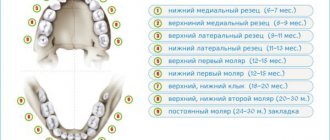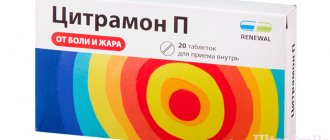Causes of pain
There are many reasons why a dead tooth may begin to cause pain. Most of them are associated either with the lack of adequate treatment and care, or with the development of the inflammatory process. The most common reasons are:
- Incomplete nerve removal. If the nerves were not completely removed, the tooth will hurt in case of the slightest inflammation.
- Poorly cleaned channel. After the nerve is removed, the dead tooth is filled, but if the canal was poorly or incompletely cleaned, microscopic particles remain under the filling material. Over time, they cause inflammation and, as a result, pain.
- Poor quality filling. When filling, the material must be inserted into the canal completely, to the very end. If part of the canal is not sealed, pathogenic microflora begins to develop there. A variant of this reason can be considered the use of low-quality filling materials. They quickly collapse, causing the channel to open.
- Inflammatory processes in the gums or periosteum. Inflammation that develops next to a dead tooth begins to spread to nearby tissues, causing pain.
Whatever the reason, if a dead tooth starts to hurt, you need to contact a dentist. Delay can lead not only to the destruction of the crown, but also to the rapid spread of inflammation.
Symptoms of spasms in children
As mentioned above, the most common cause of spasms in children is pathology of the gastrointestinal tract.
Below we consider the main symptoms of gastrointestinal diseases accompanied by spasms in children:
- Intestinal colic. This pathology is characterized by sudden and severe bouts of crying in the baby. Colic appears during the neonatal period. Intestinal colic is associated with immaturity of the nervous regulation of intestinal activity and increased gas formation against the background of intestinal dysbiosis.
- Functional diarrhea and constipation. Spasms in these pathologies are not the main symptom. They can only appear periodically. The diseases are functional disorders of young children, which are accompanied by diarrhea or constipation, respectively. At the same time, an in-depth examination does not reveal any other pathology.
- Acetonemic syndrome. Often occurs in children, especially during early childhood. As a rule, the cause of its development is an error in diet. Other reasons include ARVI, harmless excitement (birthdays, etc.), stress. In this case, the pain is no longer caused by spasm, but by irritation of the mucous membrane with ketone bodies (those substances that cause acetone syndrome). Characteristic symptoms of this disease are the smell of acetone in the exhaled air, nausea, vomiting, lethargy, and drowsiness.
- Biliary dyskinesia, inflammation of the gallbladder . Dyskinesia is a functional disorder of the gallbladder and bile ducts, which may be accompanied by spasms in these organs. As a result, children experience pain, often in the right hypochondrium. In addition, children feel heaviness in the right hypochondrium, bitterness in the mouth, and yellowness of the skin and eyes appears.
- Gastritis and peptic ulcer. The causes are often Helicobacter pylori. Children experience: nausea, often vomiting, abdominal pain, heartburn, tendency to constipation, bad breath.
With gastritis, children often experience nausea, vomiting, and abdominal pain.
- Malabsorption syndrome . Among the pathologies in this group, it is worth highlighting celiac disease and lactase deficiency. Celiac disease is a gluten intolerance that is accompanied by a variety of symptoms, including abdominal pain. Lactase deficiency is an intolerance to dairy products, after consuming which occurs bloating, abdominal pain and diarrhea.
- Inflammatory bowel diseases. These include Crohn's disease and ulcerative colitis. It is most often characterized by the appearance of blood in the stool and abdominal pain. Subsequently, symptoms intensify and other signs appear.
- Intestinal infections. Acute intestinal infections are manifested by fever, often vomiting and diarrhea, which is characterized by persistent progression. As a rule, it can develop after eating bad foods or after contact with a sick person.
In addition to pathology of the gastrointestinal tract, other diseases can lead to the development of spasms and pain. Urinary tract infections are quite common, especially in girls. This is due to the short and wide urethra, through which pathogenic bacteria can quickly penetrate. The development of cystitis is accompanied by the appearance of symptoms such as pain when urinating, pain, frequent urination, burning and pain in the urethra and bladder. Teenage girls often develop dysmenorrhea, which is characterized by pain and heaviness in the lower abdomen.
Symptoms
Most often, painful sensations occur during chewing or eating hot or cold food. Some patients complain of almost constant, aching or throbbing pain.
The inflammatory process can develop rapidly. In this case, the pain is usually sharp and severe. May be accompanied by swelling of the gums and swelling of the face. Sometimes the inflammation lasts for years, and since the patient does not experience severe pain, he delays the visit to the dentist, aggravating the situation.
What to do if a dead tooth hurts
At the first appearance of pain, you should contact your dentist. Since in most cases pain is a consequence of the inflammatory process, the doctor must carry out a diagnosis.
It is imperative to assess the condition of the gums, diagnose (or exclude) diseases such as periodontal disease, periodontitis, etc. Gum disease is difficult to treat, and timely diagnosis will help to prescribe the right treatment in time.
After diagnosis, the doctor prescribes treatment aimed at eliminating the causes of pain:
- If inflammation is detected, anti-inflammatory drugs or antibiotics may be prescribed.
- The old filling is removed, the canals are cleaned, and the filling is performed again.
- The darkened crown of the dead tooth is additionally whitened to restore the aesthetics of the smile.
If you have a problem similar to that described in this article, be sure to contact our specialists. Don't diagnose yourself!
Why you should call us now:
- We will answer all your questions in 3 minutes
- Free consultation
- The average work experience of doctors is 12 years
- Convenient location of clinics
Single contact phone number: +7
Make an appointment
A specific treatment plan is prescribed individually, based on the results of the examination and the general condition of the patient’s teeth and gums. Sometimes pain in a dead tooth is a consequence of a whole range of dental problems.
Toothache
Rating: 0
From the book “Homeopathic Home Medicine” by Laurie pp. 140-145
Treatment.
Guiding indications. 1) BY TYPE OF TOOTH PAIN.
Inflammatory: Aconitum, Belladonna, Gelseminum. Rheumatic: Bryonia, Rhus, Cimicifuga, Mercurius. Dyspeptic: Chamomilla, Nux vomica, Pulsatilla. Neuralgic: Cimicifuga, Cypripedium, Chamomilla, Glonoin, Spigelia.
2) AT THE PLACE OF PAIN.
Chiefly in decayed teeth: Belladonna, Mercurius, Nux vomica, Sulfur. Lower teeth with pain extending to face and neck: Belladonna, Spigelia. Upper teeth: Hyoscyamus. Left side: Mercurius, Cimicifuga. In filled teeth: Cicuta. Spreading to forehead: Hyoscyamus. - on the root of the nose and eyes: Ignatia, Cypripedium, Cimicifuga. - on the ear: Pulsatilla, Mercurius.
3) BY THE NATURE OF PAIN.
Itching, tingling, shooting or silent: Aconitum, Pulsatilla. Beating, burning, stitching: Belladonna, Glonoin. Pulling, tugging: Chamomilla, Mercurius, Hyoscyamus. Shooting pains: Gelseminum, Mercurius, Pulsatilla. Rapidly changing: Spigelia, Mercurius, Hyoscyamus, Nux vomica. Periodic: Arsenicum, China, Belladonna. Pressing, tearing: Spigelia, Mercurius, Hyoscyamus, Nux vomica. Intolerable: Aconitum, Chamomilla, Arsenicum, Gypripedium, Cimicifuga.
4) IN RELATION TO THE REASON.
For colds: Aconitum, Belladonna, Mercurius, Sulfur, China. - cold wind: Aconite, Bryonia. - dampness and getting wet: Rhus, Dulcamara, Mercurius. - digestive disorders: Nux vomica, Chamomilla, Pulsatilla. - weaknesses: China, Arsenicum. - nervousness: Cypripedium, Nux vom., Gimicifuga, Glonoin.
5) ACCOMPANIED:
Paleness of face: Aconitum. Redness of face: Belladonna. Redness of one cheek and pallor of the other: Chamomilla. Fainting: Chamom., Aconitum. Violent restlessness: Aconitum, Chamom., Gimicifuga. Thirsty: Aconitum, Belladonna. Swelling of gums and cheeks: Belladonna, Mercurius. Diarrhea: Chamomilla, Dulcamara, Mercurius, Sulfur. Severe sensitivity: Aconitum, Chamomilla, Belladonna. Sensation as if teeth were lengthened: Mercurius, Bryonia, Arsenicum. - stagger: Mercurius, Hyoscyamus. Nausea and dizziness: Glonoin. Chill: Aconitum, Arsenicum.
6) IF OHA IS CALLED:
Cold food: Aconitum, Sulfur, China, Nux vom., Spigelia, Cimicifuga, Bryonia. Hot food: Pulsatilla, Nux vom. Cold or hot food: Chamomilla, Garbo vegetabilis. Food: Belladonna, Ghamomilla, Arsenicum, Mercurius. By crumbs falling into the hollow of the tooth: Nux vomica. Cold air: Aconitum, Bryonia, Cimicifuga.
7) IF IT GETS EASIER:
For heat: Arsenicum. - cold: Pulsatilla. - pressure: Arsenicum, Bryonia. - fresh air: Aconite. - food: Spigelia. - lying: Bryonia, Spigelia.
 IF IT GETS WORSE.
IF IT GETS WORSE.
For heat: Mercurius, Hepar sulfuris. - food: Mercurius, Chamomilla, Belladonna, Bryonia, Carbo vegetabilis. For cold: Hyoscyamus. - pressure: Hyoscyamus, Aconitum. - wrapping: Arsenicum. - sleep: Belladonna.
9) IN RELATION TO THE TIME OF DAY. Worse at night: Aconitum, Arsenicum, Belladonna, Mercurius, Nux vomica. - in the morning: Nux vomica, Hyoscyamus, Belladonna. - in the evening: Belladonna, Sulfur, Pulsatilla.
Detailed treatment.
Aconitum.
The pain is itchy, tingling, shooting, creeping, or silent;
or appears in the form of attacks, very severe, accompanied by severe nervousness and anxiety; the pain is then burning, piercing, boring, tearing or oppressive; worse in the evening and are most unbearable at night; they are relieved by fresh air or by sitting quietly. The pain can quickly jump from one side to the other. The face is either extremely pale or bright red. There is a strong sensitivity to touch and the slightest movement, a tendency to faint when moving from a sitting or lying position to a standing one. Dry, cold easterly winds often cause pain. 1 dose every 2-3 hours. Belladonna.
A stabbing, burning, tormenting pain, usually accompanied by inflammation and a red, shiny swelling.
Great sensitivity to cold air, light and noise. Worse about 3-4 o'clock in the afternoon or at night. The pains often disappear suddenly, having reached the highest degree of their development, or disappear in one place, while in another place others, different from the first pains, appear. Often worse after sleep, or they appear immediately upon waking. 1 dose every 3 hours. Chamomilla.
Severe, drawing, twitching pains that seem unbearable and cause the patient to toss and turn;
they are replaced by a feeling of numbness. Irritable, tearful mood during pain; increased or renewed pain from eating or drinking something cold or warm; heat and redness, especially of the cheeks. 1 dose every 2-3 hours. Arsenicum.
The pain returns at certain hours or days or when the patient awakens from sleep, especially before midnight;
or they are so unbearable that they can drive the patient to despair and rage, often accompanied by trembling, a feeling of cold or chills and thirst; heat in face and body; noise in ears; severe loss of strength; a feeling of being unable to stand on one’s feet, but despite this, the pain subsides when standing or walking, or from warmth and pressure on the sore spot; they tend to appear after dinner, especially when lying down, or are excited by the conversation of others. 1 dose every 2-3 hours. Cimicifuga.
Pure neuralgic pain, as a result of excitement or exhaustion;
nervous weakness; feeling very tired; constant anxiety; the patient does not know where to go and what to do; strong sensitivity to cold air, which seems to the patient to penetrate right through him. The pain is usually worse on the left side. 1 dose every 2-3 hours. Gelseminum
.
Acute, sudden, rapid pain, so sudden that it makes you shudder, or appearing in the form of real paroxysms, accompanied by severe general nervousness, information and muscle twitching near the site of pain. The pain, when it passes, leaves behind a strong sensitivity. 1 dose every 2-3 hours. Glonoin.
Very severe attacks of neuralgia, with a beating, burning, crackling headache;
nausea, dizziness, fainting and a feeling of constriction in the throat. Not everyone seems to be equally sensitive to its effects. 1 dose every 2 or 3 hours. Cypripedium
.
Severe, infuriating neuralgia, from increased susceptibility or irritability, as, for example, in those whose nervous system has been severely tested or who have been on duty and caring for the sick for a long time and restlessly. Insomnia, restlessness, trembling, irritability, short temper, grumpiness; their movements are hasty and incorrect; they get irritated by the slightest contradiction and cannot bear the slightest excitement. 1 dose every 2-3 hours. Hyoscyamus.
Drawing, tearing, beating pain in the upper teeth;
the beating extends to the forehead or to the root of the nose and eyes, with a burning heat of the face. The teeth appear loose, as if about to fall out. The pain is aggravated by pressure and cold air and usually appears in the morning. 1 dose every 2-3 hours. Mercurius.
Terrible twitching in the teeth, extending to the cheek of the affected side and to the glands under the jaw.
The teeth feel elongated and loose. The pain sometimes spreads to the ear, like a stabbing sensation, especially at night. The gums are red and swollen, or pull away from the teeth. The pain increases when eating, from cold air entering the mouth and from contact with something warm or cold on the tooth; the pain becomes unbearable in bed or in the cold air. Gums bleed at the slightest touch. The patient is chilly and is bothered by severe drooling. 1 dose every 3 hours. Nux vomica
.
Drawing, tearing pain, first in the empty tooth, then spreading to both jaws, to the bones of the face and temples; decreases from wrapping the cheek with something warm and from sleep, returns again from a sip of cold water or crumbs caught in the tooth; or it may be caused by warm drink, or the warmth of the room; loose teeth, swollen gums. 1 dose every 2 or 3 hours. Spigelia.
Oppressive, tearing pain in the lower jaw, spreading to the back of the head and causing painful movement of the head;
pale, swollen face; yellow circles around the eyes, palpitations, chilliness, restlessness. The pain is worse from cold or from contact with air or cold water. The pain goes away when lying down and while eating. 1 dose every 2 or 3 hours. Cicuta
.
Nervous toothache resulting from the pressure of gold filled teeth. 1 dose every 2-3 hours. Rhus.
The pain is characterized by irritability.
This remedy can often be used preferably before Chamomilla, especially if the pain occurs after soaking the feet. 1 dose every 2 hours. Dulcamara
.
In cases where toothache, arising from similar causes, from colds or wet feet, is accompanied by a disorder of the intestines and has not been relieved by Chamomilla. 1 dose every 3 hours. Pulsatilla.
Suitable for people of mild temperament, it is of great service when toothache is due to indigestion, or with the consumption of coffee, sweet, sour, wine or stimulants.
The pain is boring, gnawing, with stabbing in the gums, spreading to the face, head, eye and ear. In particular, Pulsatilla is effective for toothache with ear pain, or for pallor of the face caused by a cold, when we find short and difficult breathing; the pains are sometimes drawing, tearing, shooting or jerking, and at times the nerves seem as if they were stretched and then suddenly dropped; the pain is significantly worse in the evening or after midnight, usually from warmth and rest, and is relieved by cold air or cold lotions. 1 dose every 3 hours. Sulfur
is especially suitable for scrofulous subjects with a tendency to constipation and if the pain is caused by cold.
It is indicated for pain, swelling of the cheeks, shooting in the ears, rush of blood to the head and pounding headache; tearing, tugging pain that affects both carious and healthy teeth; worse in the evening and at night or from the influence of external air, as well as from cold water and chewing; sensation as if the teeth were loose, lengthened and sharpened; Gums are swollen and bleed easily. 1 dose every 1-2 hours, until improvement or change. Chipa,
in chronic cases where pain is caused by every cold, but especially if it returns at regular intervals.
1 dose every 3-4 hours, until improvement or change. Bruopia - for persons of a lively, choleric, stubborn character; a feeling of looseness and elongation of teeth, especially during or after eating; shooting in the ears; desire to lie down; the pain intensifies from anything hot; subside when lying on the painful side or intensify when lying in the opposite position. 1 dose every 3 hours. Carbo vegetabilis
Drawing, tearing or tightening and tearing pain caused by everything hot, cold or salty;
constant loosening of teeth; the gums sag, ulcerate and fester, especially after mercury; bleeding from teeth and gums, with a tendency of teeth to rapid destruction. 1 dose every 3 hours. Hepar sulfuris.
-Drawing, tugging toothache, increasing when clenching teeth, chewing, or sitting in a warm room; swollen gums, with sensitivity to pressure or abscesses in the gums. This medicine is especially useful if the patient has previously been subjected to allopathic treatment with mercury. 1 dose every 3 hours.
Additional measures.
Colds, draft winds and dampness, coffee or any kind of irritants, tea, except the weakest, very hot and very cold drinks, sweet foods, acids and medicinal tooth powders, as well as the constant use of toothpicks should be carefully avoided. The mouth should be thoroughly rinsed after each meal with water and the teeth should be carefully brushed with clean...tooth powder; The toothbrush should not be too hard. A cold, lukewarm, or hot compress, whichever is more pleasant to someone, on which a few drops of the medicine used is dripped, often provides a great service, as well as rubbing the cheek with a small amount of the used tincture or placing it on cotton wool in the hollow of a tooth or spraying the face with medicine. ... A change in air and situation in other cases is absolutely necessary, so without it one cannot hope too much for improvement. If there is an abscess at the root of the tooth, rarely does anything help other than extract the tooth. At the same time, you should not be in a particular hurry to extract the tooth, since homeopathic remedies quickly help.
- all materials
Prevention
If you have dead teeth, care must be taken to preserve them. A crown that does not receive nutrients is fragile. Over time, it can deteriorate and tooth mobility appears. Prevention of diseases in such diseases is very important.
It is imperative to ensure proper daily oral hygiene. Teeth should be brushed with a suitable toothpaste; the brush should not have very hard bristles. After eating, you need to rinse your mouth with special compounds. This will help get rid of food debris and minimize the risk of developing plaque, tartar, and the proliferation of pathogenic microorganisms.
It is important to undergo regular examinations by the dentist, and at the first appearance of pain or signs of disease, immediately go to see a doctor for diagnosis and treatment.









![Table 2. NSAIDs used in the treatment of back pain (Shtulman D.R., Levin O.S.) [9]](https://maestrostomat.ru/wp-content/uploads/tablica-2-npvs-primenyaemye-pri-lechenii-boli-v-spine-shtulman-330x140.jpg)
